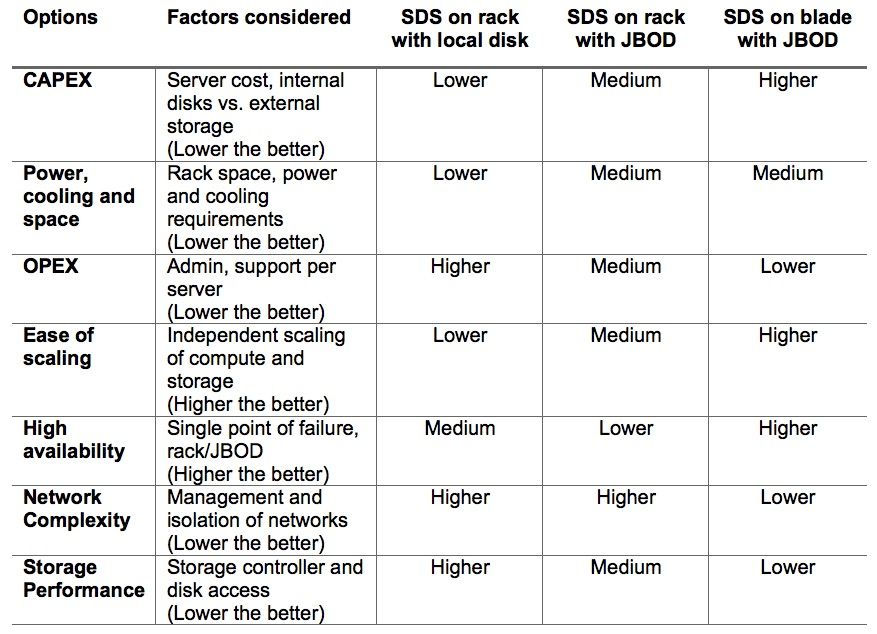- Community Home
- >
- Servers and Operating Systems
- >
- Servers & Systems: The Right Compute
- >
- Considering migrating to software-defined storage?...
Categories
Company
Local Language
Forums
Discussions
Forums
- Data Protection and Retention
- Entry Storage Systems
- Legacy
- Midrange and Enterprise Storage
- Storage Networking
- HPE Nimble Storage
Discussions
Forums
Discussions
Discussions
Discussions
Forums
Discussions
Discussion Boards
Discussion Boards
Discussion Boards
Discussion Boards
- BladeSystem Infrastructure and Application Solutions
- Appliance Servers
- Alpha Servers
- BackOffice Products
- Internet Products
- HPE 9000 and HPE e3000 Servers
- Networking
- Netservers
- Secure OS Software for Linux
- Server Management (Insight Manager 7)
- Windows Server 2003
- Operating System - Tru64 Unix
- ProLiant Deployment and Provisioning
- Linux-Based Community / Regional
- Microsoft System Center Integration
Discussion Boards
Discussion Boards
Discussion Boards
Discussion Boards
Discussion Boards
Discussion Boards
Discussion Boards
Discussion Boards
Discussion Boards
Discussion Boards
Discussion Boards
Discussion Boards
Discussion Boards
Discussion Boards
Discussion Boards
Discussion Boards
Discussion Boards
Discussion Boards
Discussion Boards
Discussion Boards
Community
Resources
Forums
Blogs
- Subscribe to RSS Feed
- Mark as New
- Mark as Read
- Bookmark
- Receive email notifications
- Printer Friendly Page
- Report Inappropriate Content
Considering migrating to software-defined storage? Evaluate server options before you migrate

In today’s digital economy, analytics, IoT and social media are driving exponential data growth. This change has forced a shift in traditional data management techniques resulting in advanced frameworks like SDS to gain traction.
SDS: the storage brain of the software-defined data center
SNIA defines SDS as virtualized storage with a service management interface. Characteristics include:
- Tiered storage pool
- Standardized storage management interface, such as SNIA’s Storage Management Initiative Specification (SMI-S)
- DevOps enablement to use a variety of data management tools
- Ability to execute data services in servers and/or storage appliance
How should you plan SDS implementation?
Planning SDS infrastructure implementation is important for any IT planner. Here’s how we recommend getting started.
First, some of aspects like ecosystem support, vendor capability and investments plus benefits for workloads are important considerations. When it comes to other decision points, you need to consider various financial factors like CAPEX and OPEX, along with technical factors like scaling, performance, and high availability.
Keep in mind that SDS on rack and blade form-factor servers can be classified into three options:
- SDS on rack with local disk
- SDS on rack with JBOD (just a bunch of disks)
- SDS on blade
Use this table to compare these three options to guide your choices:
Taking all these things into consideration, we suggest you keep these guidelines in mind when determining the infrastructure needed to to deploy your SDS solution:
- With lower CAPEX and OPEX, SDS on a rack server with a local disk would be good entry option.
- For medium scalability, storage performance and network complexity considerations, SDS on a rack server with JBOD can be considered.
- For higher availability, storage performance and scaling consideration, SDS on Blade with JBOD would be a good option.
Evaluate and choose an option which best meets your requirements. Know that HPE can help with all of these options. If you are interested in learning more, please contact your HPE representative.
Our goal: We want you to get more from your servers with storage.
Meet Server Experts blogger Deepak SN, Data Center Solution Engineer, HPE. Deepak has 16 years of data center solution experience in architecture design, capacity planning and applications support for enterprise customers. He keeps tabs on the latest technology trends and interests in converged and hyperconverged platforms, SDDC, VDI and cloud technology.
Server Experts
Hewlett Packard Enterprise


- Back to Blog
- Newer Article
- Older Article
- PerryS on: Explore key updates and enhancements for HPE OneVi...
- Dale Brown on: Going beyond large language models with smart appl...
- alimohammadi on: How to choose the right HPE ProLiant Gen11 AMD ser...
- ComputeExperts on: Did you know that liquid cooling is currently avai...
- Jams_C_Servers on: If you’re not using Compute Ops Management yet, yo...
- AmitSharmaAPJ on: HPE servers and AMD EPYC™ 9004X CPUs accelerate te...
- AmandaC1 on: HPE Superdome Flex family earns highest availabili...
- ComputeExperts on: New release: What you need to know about HPE OneVi...
- JimLoi on: 5 things to consider before moving mission-critica...
- Jim Loiacono on: Confused with RISE with SAP S/4HANA options? Let m...
-
COMPOSABLE
77 -
CORE AND EDGE COMPUTE
146 -
CORE COMPUTE
163 -
HPC & SUPERCOMPUTING
138 -
Mission Critical
88 -
SMB
169



